Over the past four days, during the second half of the Monterey Car Week, Weathertech Raceway Laguna Seca played host to a special four day event celebrating some of the greatest, some of the most influential, and some of the most important cars in motorsports history. And unlike a Concours d’Elegance or a parade lap, these cars came to Monterey for one reason alone:
To be driven. Properly driven. Where they belong, on the track.
Day one of the four day Monterey Motorsports Reunion event, or simply the Monterey Reunion, saw everything from 1950’s GT and LeMans cars to late 1990s touring cars roar around the race track. If you missed the live stream of the event, you can watch it here: Monterey Reunion Day One. Do plan out your time though, as the whole stream is 8 full hours of history.
For our highlights of day one, as it was mostly just a show-and-go day so that the drivers of all the amazing classic cars could get used to the circuit for the weekend races, we are going to focus in on some of the most special, rare, and game-changing race cars that graced the tarmac at Laguna Seca with their tires.
1982 Lotus 91/8 Cosworth

Lotus was a dominant force in the mid-to-late 1970s, with Colin Chapman designing machinery that used aerodynamics to the fullest of engineering understanding at the time. It was Lotus that introduced the first ground effects car, the 1977 and 1978 Lotus 78, using venturi tunnels which are returning next year in the 2022 Formula 1 World Championship as the primary way the cars will generate downforce. However, between 1979 and 1981, the pursuit of pushing the envelope with newer designs and some out-there ideas led to Lotus race cars becoming uncompetitive and unreliable.
In 1982, however, with Chapman designing and Peter Warr running the team, the 91/8 Cosworth was one of the most revolutionary cars of Formula 1, full stop. The early 1980s was when carbon fiber was still a new, unexplored, underdeveloped material, which only one of the richest teams, McLaren, investing heavily in. That lead to the light, but only moderately competitive 1981 McLaren MP4/1, the first car to use the now-standard carbon fiber monocoque design. Where Chapman took the idea and ran with it was by shaping the carbon fiber monocoque and body shell to coax the air into producing massive downforce in an ingenious way. Not over the gigantic rear wing, which you will note is almost completely flat, nor the front wing, again almost completely flat.
The 91/8 Cosworth used a ground effect underbody comprising of two large venturi tunnels, while the body overtop was made as thin in profile as possible, and scooped a layer of air up from the start of the venturi tunnel to pass through radiators and then join the cool air flowing over the side pods of the car. In effect, Chapman designed a system whereby rammed air, just as it was starting to compress through the venturi tunnels, was skimmed and held under a layer of air moving over top of the sidepods. This created a thin layer of high-pressure air, which when it passed over the tail end of the car, thrust it down into the track. This was aided by the rapidly expanding compressed air through the venturi tunnels created a low-pressure zone that sucked the car hard down to track.
It was the second-ever Formula 1 car to use a full carbon fiber monocoque chassis, and one of the last to use the legendary Ford Cosworth DFV V8, the winningest engine in all of Formula 1 history. But it was revolutionary because it was, and to this day still is, one of the hardest cornering Formula 1 cars ever made. This is because Colin Chapman, by using the simplest principles of aerodynamics, that of high-pressure and low-pressure air, created the mad rush in the 1980s and 1990s to fully understand aerodynamic effects on racing cars.
1988 Porsche 962C IMSA

The International MotorSports Association, or IMSA for short, is a racing series sanctioned in North America to allow for international competitors and international race cars to come to the USA and race on some of the most legendary tracks we have over here. It wasn’t always that way, since when IMSA began, it was mostly for privateers and small team owners that wanted to race faster and harder than was allowed in the SCCA (Sports Car Club of America) rules at the time. However, after gaining rapid popularity internationally through the 1980s IMSA GT era, the rules were changed in 1988 to allow for global-level factory teams to enter cars for competition in the IMSA series, in either the Group C style prototype Le Mans cars, or international GT level production-based cars.
Group C was an area where Porsche, at least in the European Group C competitions, was dominant. With the 962C, they had an extremely fast car that was lightweight, rarely broke down, and could rip the doors of most competitors. This was because the frame and body were, at the time, one of the first to use aerospace-grade aluminum in a competition car that passed all required safety tests. This made the 962C very, very light. Fully race-ready, with all fluids and no driver in, the car weighed a scant 1,808 lbs, or 820 kg.
Little wonder it was a rocketship, then, when you consider that one of the most reliable endurance engines ever made was slapped smack dab in the middle of the car. The 3.0L Type 935 Twin-Turbocharged Flat-Six used two massive, water-cooled Borg-Warner Type-KKK turbochargers, and produced almost 700 HP. From a 3.0L boxer engine. The slightly more powerful Porsche 962C1 won both the 1987 and 1988 24 Hours of Le Mans, and helped, along with multiple high placements and some outright wins in IMSA, cement the Porsche 962C as possible the best known Group C car ever made.
2011 Oreca 03 LMP2

For those that have followed the 24 Hours of Le Mans as it has morphed, changed, and developed over the years, one name has almost always come up, either as a factory team, as a manufacturer, or as a spec class producer. That name is Oreca, the famous French racing company that has built some of the most amazing prototype racing cars to ever compete around le Circuit de la Sarthe. And 2011, as the history books show, was one of those 24-hour races that was a classic from the first lap. This was the race that saw two of the three dominant Audi R18 Turbo Diesel LMP1 cars crash heavily, with the cars almost entirely destroyed except for the survival cell in both circumstances. Those two accidents, and the strength of the survival cell, saw the rules changed to no longer allow open-cockpit LMP1 cars from 2012 onwards, and no more open cockpit LMP2 cars from 2014 onwards..
But the race was also significant for Oreca, especially with the 03 LMP2 car. Powered by a Nissan VK45DE V8 producing between 450 to 500 HP, the car placed both first and third in class, with a Judd V8 powered 03 LMP2 taking sixth in class. Significantly, due to the attrition rate of the LMP1 field, the #24 Signatech Oreca-Nissan 03 was one of the first LMP2 cars to place in the top 15 overall at the race. This is significant because unlike recent years, where there were maybe 6 or 8 LMP1 cars leading a field of about 20 LMP2 cars, the LMP1 field in the early 2010s was packed with up to 24 entrants at times.
The Oreca 03 LMP2 also raced stateside, with its worldwide first race being at the 12 Hours of Sebring as part of the American Le Mans Series in 2011. The Signatech-Nissan (nowadays Signatech-Alpine) #26 car won the LMP2 class there and came in an astounding 11th overall, beating the OAK-Pescarolo LMP1 car which placed 16th. Little wonder that this little French lightweight racer, with a thundering Japanese V8 heart, became an instant classic. And that’s not even mentioning that it is, in some opinions around the Sports Car Digest, one of the best looking modern prototype cars ever made!
1964 Shelby Cobra 289 Team FIA #146

While the Shelby Cobra 427 SC of 1965 is by far the more famous car, it wouldn’t have even had a chance to exist if not for the 1963-64 Shelby Cobra 289. Originally the AC Ace, the car that would become synonymous with the Cobra name was originally powered using BMW inline-six engines. It was when Carroll Shelby wrote to AC cars in the UK, asking if they could make a full car, except for the engine, and reprofile the engine bay to handle a 289 cubic inch (4,700 cc) Ford V8. They built two such cars and shipped them off to America in 1962. The rest, as they say, is history.
What is significant about the 1964 version of the Shelby Cobra 289, however, is that there were five competition cars built to compete in the FIA World GT Championship. Car number 146 was the second of these cars built and shipped off to Europe to compete and was driven by the legendary pairing of Dan Gurney and Jerry Grant. With the Ford V8 chucking out 370 HP, car 146 came in second overall in the 1964 Targa Florio 720 KM race. Dan Gurney also set the outright lap record of the 72 KM long “Variante Piccolo” circuit in car number 146, a record which was never beaten before the Targa Florio was canceled.
The car also competed in the 500 KM of Spa-Francorchamps, placing 15th after encountering some mechanical issues halfway through. It was set to compete in the 1964 1000 KM Nurburgring Nordschleife race, but was crashed in open practice and had to be withdrawn from entry. So to see car #146, being one of only two of the original five FIA Cobra 289’s that still run, roar around Laguna Seca with a thoroughly planted go pedal its truly a treat.
1973 BMW E9 3.o CSL Group 2

Now here’s a car that was rarely seen on American shores! Before there were the M-series of cars, or even the M-Division at BMW, there was the vaunted CSL moniker. The three letters stand for “Competition, Super Light,” and the 1973 BMW E9 3.0 CSL Group 2 was just that. A homologation racing special variant of the E9 2800 CS, the CSL took everything about its foundation car and dialed it up the max to allow it to be competitive in European Group 2 Touring Car sanctioned events.
The biggest thing that was changed about the car is in the name itself. Instead of using the 2.8L inline-six, it was fitted with a race-special, 3.0L variant of the M30 engine. Known as the M30B30, the engine produced 200 HP, in a car that weighed well under a ton. This was through removing pretty much everything and the kitchen sink from the interior, including half the thickness of the steel body panels! The windows were replaced with polycarbonate perspex, the hood, doors, and rear decklid were all made of lightweight aluminum.
It proved to be an absolute gem of a car for Group 2 Touring Cars, winning the drivers title six times between 1973 and 1979. A special version was made to compete in Group 4 Touring Cars at the request of Hans-Joachim Stuck, one of the winningest German drivers ever, and was racing quite competitively against turbocharged Ford Capri’s, Porsche 911 RSRs, and even Ferrari and Lamborghini GT race cars. It is wonderful to see one at Laguna Seca, and with the color scheme on the Castrol #1 E9 3.0 CSL, it just looks… right. It’s a car that belongs on the track, and every time it’s on a track, it’s a special occasion.


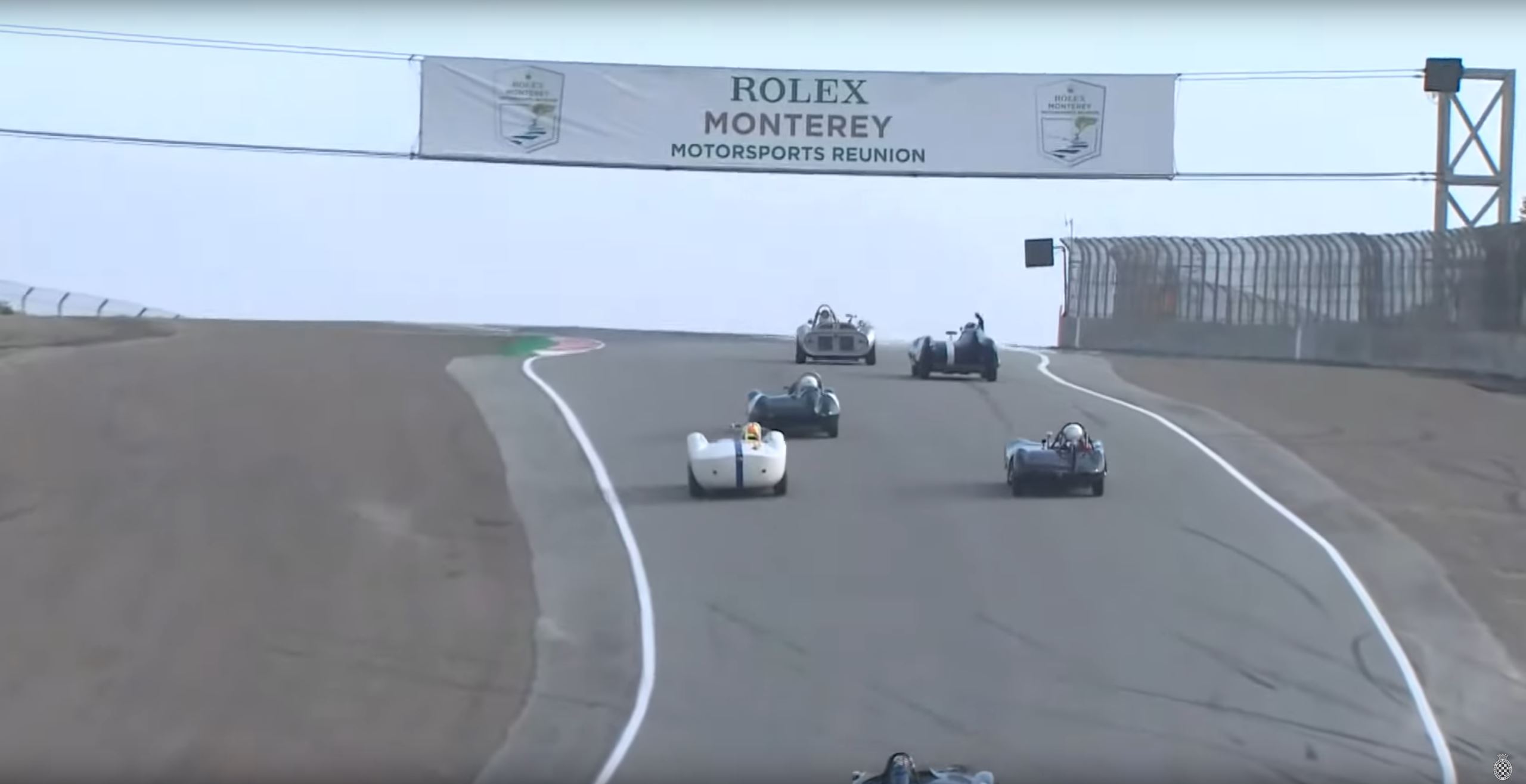

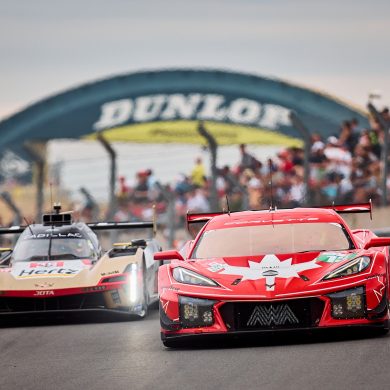
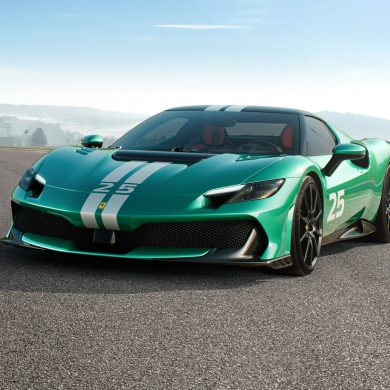
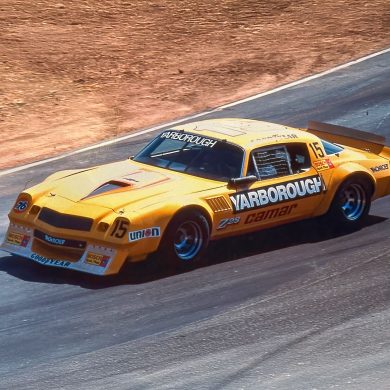
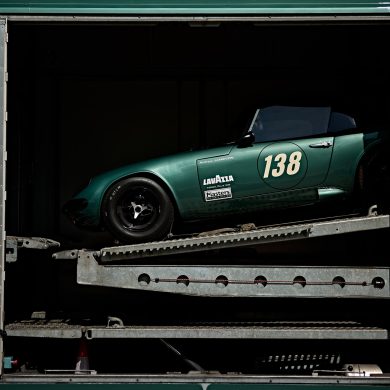
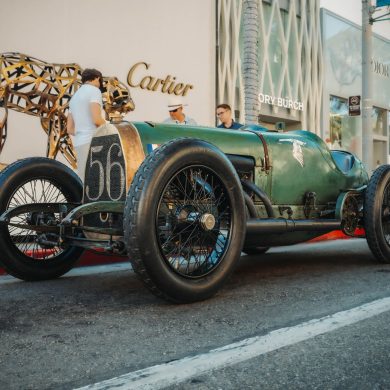
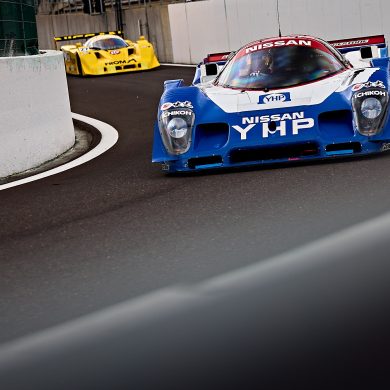


Sadly, the driver of the Repsol Porsche put it into the wall at Turn 4 on Friday. I saw the car in the paddock on Saturday and it will require some fiberglass work at minimum. Couldn’t tell if the chassis sustained any damage.